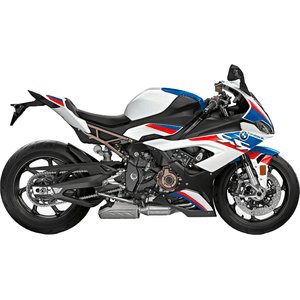BMW S 1000 RR (2019–2022): A Generation Redefining Superbike Excellence
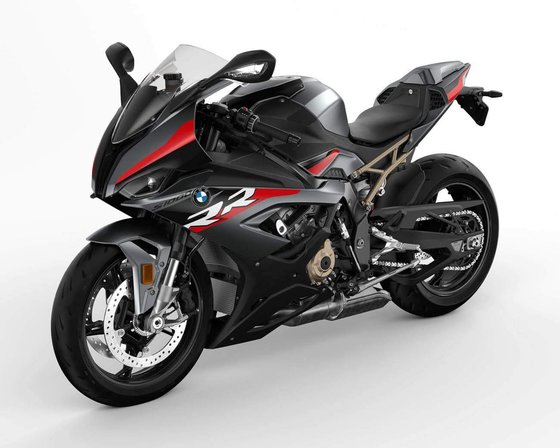
Introduction
The BMW S 1000 RR needs no introduction. Since its debut in 2009, it has redefined what a liter-class superbike can achieve, blending racetrack ferocity with street-riding practicality. The 2019–2022 generation, however, marks a quantum leap. With BMW’s ShiftCam technology, a lighter chassis, and electronics that feel plucked from a MotoGP garage, this iteration isn’t just a motorcycle—it’s a statement. Having spent time with this machine, I can confidently say it’s a masterclass in engineering that caters to both seasoned track warriors and adrenaline-seeking road riders. Let’s dissect why this generation stands tall in the pantheon of modern superbikes.
Design & Ergonomics: Form Meets Function
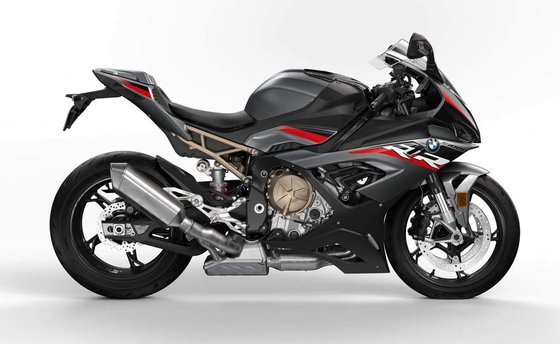
Aggressive Aesthetics, Purposeful Minimalism
Gone are the asymmetric headlights of earlier models. The 2019–2022 RR adopts a symmetrical LED front end, giving it a shark-like stare that screams intent. The fairing is sharper, with aerodynamic grooves channeling air efficiently. BMW’s “Flex Frame” integrates the engine as a stressed member, allowing for a narrower fuel tank and slimmer waistline. This design isn’t just for looks—it lets riders grip the tank with their knees effortlessly, even at full lean.
The M Package elevates the visuals with carbon fiber wheels, a sport seat, and Motorsport liveries (Light White/Racing Blue/Racing Red). Optional forged wheels shave 3.5 kg (7.7 lbs) off the standard cast aluminum, while the Isle of Man Edition’s Akrapovič titanium exhaust adds a dose of exclusivity.
Rider-Focused Ergonomics
At 824 mm (32.4 inches), the seat height is accessible for most riders, though the aggressive riding position leaves no doubt about its track DNA. The clip-ons are low, and the rearset pegs position your legs in a committed tuck. Yet, BMW’s ergonomic triangle (handlebar-seat-pegs) strikes a surprising balance—I could manage hour-long rides without wrist fatigue, something rare in this segment. The 6.5-inch TFT display is a standout, offering customizable layouts (Core for track, Pure Ride for street) with crystal clarity even under direct sunlight.
Engine & Performance: The Heart of a Predator
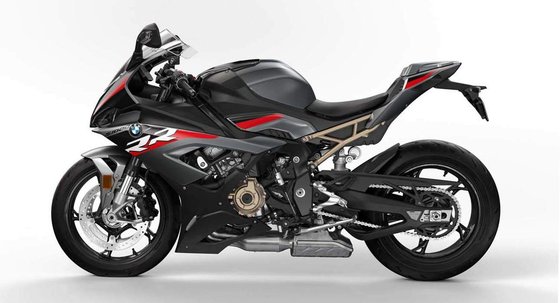
ShiftCam: The Game-Changer
The 999 cc inline-four engine isn’t just about peak numbers—205 hp @ 13,000 rpm and 113 Nm (83.3 lb-ft) @ 11,000 rpm. BMW’s ShiftCam technology varies valve timing and lift, transforming the power delivery. Below 9,000 rpm, the cam profile prioritizes smooth torque for city crawling or corner exits. Beyond that, it switches to a aggressive lobe, unleashing a ferocious top-end rush. The result? A powerband that’s tractable in Rain mode and unhinged in Race mode.
Riding Impressions: Controlled Madness
Twist the throttle, and the RR responds with a metallic snarl from the stock exhaust (upgraded to a throatier growl with the optional Sport Silencer). Acceleration is brutal yet linear, with no sudden spikes to catch riders off-guard. The real magic lies in midrange grunt—100 Nm (73.7 lb-ft) from 5,500 rpm—making overtakes a mere flick of the wrist. On a backroad blast, the bike pulled hard from 3rd gear out of corners, while track days revealed its appetite for redline hits.
The anti-hopping clutch and quickshifter (standard) are flawless. Downshifts are accompanied by automatic blips, letting you focus solely on braking markers. Fuel consumption? A reasonable 6.3 L/100 km (37 mpg) if you resist the temptation to ride like a hooligan.
Electronics & Rider Aids: Your Digital Co-Pilot
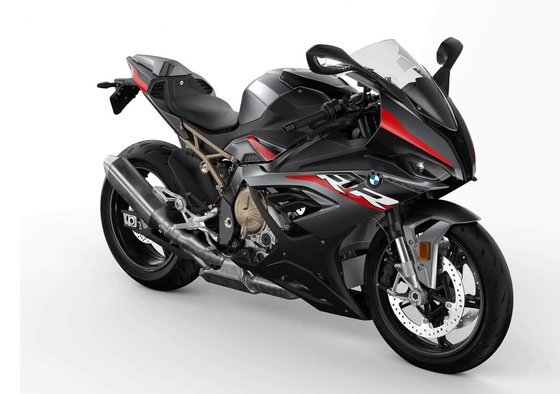
Modes for Every Mood
Four standard ride modes (Rain, Road, Dynamic, Race) alter throttle response, ABS, and traction control. Rain mode tames the beast, capping power at 150 hp and prioritizing stability. Race mode, however, is where the RR truly shines—DTC (Dynamic Traction Control) allows controlled slides, while ABS Pro lets you trail-brake into corners without intervention.
Opt for the Pro Modes (included in Premium/M Packages), and you unlock three customizable profiles. Tweaking wheelie control sensitivity or dialing back engine braking becomes intuitive via the Multi-Controller wheel.
Safety Net or Performance Tool?
BMW’s 6-axis IMU is the unsung hero. Mid-corner adjustments no longer feel like a gamble—the system calculates lean angles and adjusts DTC/ABS accordingly. During my test, deliberately hard braking mid-lean triggered ABS Pro subtly, keeping the line intact without unsettling the chassis.
Handling & Dynamics: Precision Personified
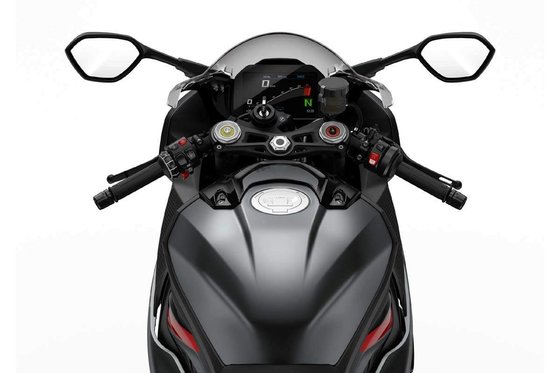
Chassis: Lightness Begets Agility
The aluminum Flex Frame weighs 1.3 kg (2.9 lbs) less than its predecessor, while the Full Floater Pro rear suspension eliminates unwanted flex. Combined with a 23.5° rake and 93.9 mm (3.7 in) trail, the RR flicks into corners with telepathic responsiveness. On tight switchbacks, it felt as nimble as a 600 cc supersport, yet stable at 250+ km/h (155+ mph).
The M Package’s forged wheels reduce rotational mass, sharpening turn-in further. Carbon fiber wheels (optional) amplify this effect, though their price tag suits only serious track enthusiasts.
Suspension & Brakes
The 45 mm USD fork and WSBK-derived swingarm offer compression/rebound adjustability. Dynamic Damping Control (DDC), available in the Premium Package, automatically adjusts damping based on riding mode and road conditions. Over patchy tarmac, the DDC softened strokes without sacrificing cornering grip.
Brembo’s Stylema calipers (4-piston front, 2-piston rear) deliver staggering stopping power. Initial bite is firm but progressive—ideal for trail-braking. ABS Pro in Race mode disengages rear ABS, allowing controlled slides under hard braking.
Competition: How Does the RR Stack Up?
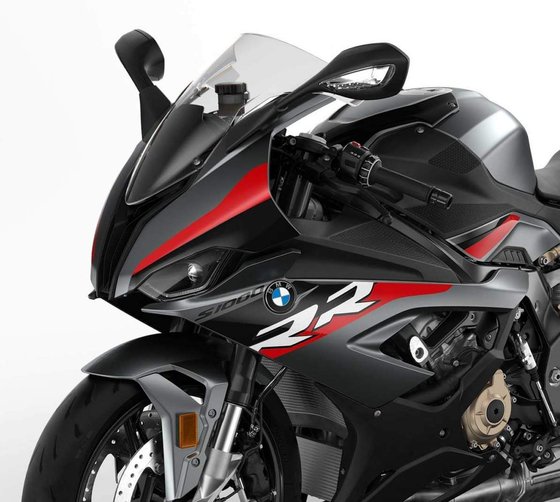
Yamaha YZF-R1
The R1’s crossplane crank delivers a raw, V4-like growl and superb midrange. However, its electronics feel dated compared to BMW’s suite. The RR’s quickshifter and DTC are more refined, especially under abrupt throttle inputs.
Ducati Panigale V4
Ducati’s 1,103 cc V4 offers 214 hp and a spine-tingling exhaust note. While it’s faster in a straight line, the Ducati’s taller seat height (850 mm / 33.5 in) and aggressive ergonomics favor track use. The RR, with its adjustable rider aids and street-friendly ShiftCam, is the more versatile choice.
Kawasaki Ninja ZX-10R
Kawasaki’s ZX-10R is a value champion, undercutting the RR on price. Its mechanical feel appeals to purists, but the BMW counters with superior electronics and a lighter chassis. The ZX-10R’s analog edge vs. the RR’s digital finesse? A matter of rider preference.
Maintenance: Keeping the Beast in Peak Condition
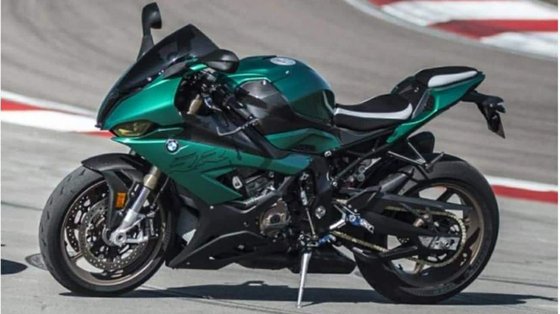
Key Service Intervals
- Oil Changes: Every 10,000 km (6,200 miles) with SAE 5W-40 (4.5L with filter).
- Chain Maintenance: Clean and lubricate every 500 km (310 miles). The M Endurance Chain (optional) reduces stretch and wear.
- Valve Clearances: Inspect every 20,000 km (12,400 miles). Titanium valves are durable but require precise adjustments.
- Brake Fluid: Replace every 2 years with DOT 4.
Common Upgrades
- Exhaust: The stock system is heavy. MOTOPARTS.store offers slip-ons like the Akrapovič GP or SC Project CR-T for weight savings and a raucous tone.
- Suspension Tweaks: Replace stock fork cartridges with Öhlins NIX30 for track-day precision.
- Tires: Swap to Pirelli Diablo Supercorsa SP V3 for stickier grip.
Pro Tips
- Use NGK LMAR9D-J spark plugs for optimal combustion.
- Monitor tire pressures (2.5 Bar/36 psi front, 2.9 Bar/42 psi rear) religiously—the RR is sensitive to setup.
- Upgrade to sintered brake pads (Brembo Z04) for track use.
Conclusion: A Superbike for the Real World
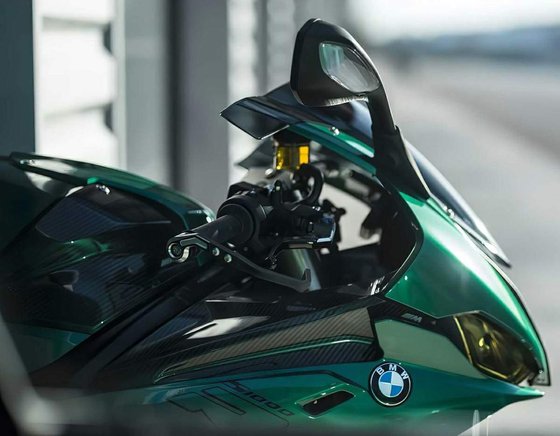
The 2019–2022 BMW S 1000 RR isn’t just a incremental update—it’s a reimagining of the superbike formula. By marrying cutting-edge tech (ShiftCam, IMU-based aids) with a chassis that forgives as much as it excites, BMW has crafted a machine that’s as home on a canyon road as it is on Circuit of the Americas. While rivals like the Panigale or R1 might excel in specific areas, the RR’s blend of adaptability, precision, and sheer usability makes it the most complete liter bike of its era.
Whether you’re chasing lap times or Sunday morning thrills, this generation rewards skill without punishing inexperience. And when it’s time to elevate your ride, MOTOPARTS.store has the upgrades—from endurance chains to carbon fiber kits—to make your RR truly yours.
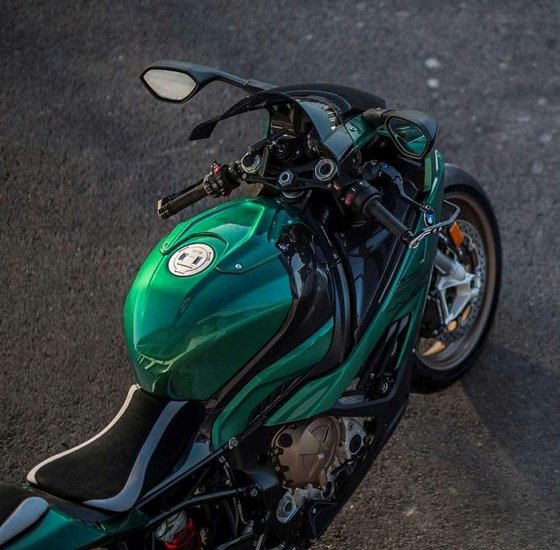


















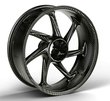



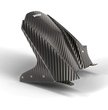

Specifications sheet
| Engine | |
|---|---|
| Stroke: | Four-stroke |
| Max power: | 151 kW | 202.0 hp |
| Max torque: | 113 Nm |
| Fuel system: | Electronic fuel injection with ride-by-wire throttle system |
| Max power @: | 13000 rpm |
| Displacement: | 999 ccm |
| Max torque @: | 11000 rpm |
| Configuration: | Inline |
| Cooling system: | Liquid/oil cooled |
| Compression ratio: | 13.3:1 |
| Number of cylinders: | 4 |
| Valves per cylinder: | 4 |
| Dimensions | |
|---|---|
| Wheelbase: | 1441 mm (56.7 in) |
| Wet weight: | 197 |
| Seat height: | 824 mm (32.4 in) |
| Overall width: | 848 mm (33.4 in) |
| Overall height: | 1151 mm (45.3 in) |
| Overall length: | 2073 mm (81.6 in) |
| Fuel tank capacity: | 16.5 L (4.4 US gal) |
| Drivetrain | |
|---|---|
| Chain type: | 525 |
| Final drive: | chain |
| Gear ratios: | 1st 2.647, 2nd 2.091, 3rd 1.727, 4th 1.500, 5th 1.360, 6th 1.261 |
| Chain length: | 118 |
| Transmission: | 6-speed constant-mesh gearbox with straight-cut gears |
| Rear sprocket: | 45 |
| Front sprocket: | 17 |
| Electronics | |
|---|---|
| ABS: | BMW Motorrad Race ABS Pro (partly-integral, disengageable) |
| Display: | 6.5-inch TFT screen |
| Riding modes: | Rain, Road, Dynamic, Race, Pro Modes (optional) |
| Traction control: | BMW Motorrad DTC with Wheelie Function |
| Maintenance | |
|---|---|
| Rear tire: | 190/55 z-17 |
| Engine oil: | 5W40 |
| Front tire: | 120/70 z-17 |
| Brake fluid: | DOT 4 |
| Spark plugs: | NGK LMAR9D-J or NGK CR8EIX |
| Coolant capacity: | 2.95 |
| Chain maintenance: | 525 chain with 118 links, sprockets 17/45 |
| Engine oil capacity: | 4.5 |
| Engine oil change interval: | Every 5000 km or 2 years |
| Valve clearance (intake, cold): | 0.10–0.20 mm |
| Valve clearance check interval: | 24,000 km / 15,000 mi |
| Valve clearance (exhaust, cold): | 0.20–0.30 mm |
| Recommended tire pressure (rear): | 2.9 bar (42 psi) |
| Recommended tire pressure (front): | 2.5 bar (36 psi) |
| Chassis and Suspension | |
|---|---|
| Frame: | Aluminum composite bridge frame |
| Rear brakes: | Single 220 mm disc, single-piston floating caliper, BMW Motorrad Race ABS Pro |
| Front brakes: | Dual 320 mm floating discs, radial 4-piston calipers, BMW Motorrad Race ABS Pro |
| Rear suspension: | WSBK aluminum swing arm with Full Floater Pro monoshock, adjustable preload, compression, and rebound damping |
| Front suspension: | 45 mm upside-down telescopic fork, adjustable preload, compression, and rebound damping |
| Rear wheel travel: | 117 mm (4.6 in) |
| Front wheel travel: | 120 mm (4.7 in) |



